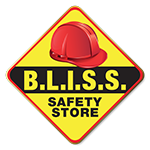WHAT ARE THE CUT-RESISTANT GLOVE STANDARDS?
There are two major global standards used to evaluate the protection levels of work gloves: ANSI/ISEA 105 (U.S. Standard) and EN 388 (EU Standard, though it is commonly cited in other parts of the world such as Canada, AUS/NZ and South America). In 2015-2016, significant changes were made to ensure consistency between both standards, reduce the gaps between protection levels and keep up with super-duper-space-age yarns and materials.
BOTH ANSI 105 & EN 388 TEST GLOVES FOR THE FOLLOWING RISKS
While all of these are important, cut is, indeed, king. And both ANSI/ISEA 105 and EN 388 specify certain tests that measure the force it takes for a blade to cut through a material.
ANSI/ISEA 105 CUT TESTING
- Test used: ASTM F2292-15
- What test does: A machine known as a tomodynamometer, or TDM, pulls a blade in 20mm paths across a glove’s surface under varied gram loads and measures the weight needed to cut through. The sample is cut five times with three different loads and an average is calculated, resulting in a cut score of A1-A9.
EN 388 CUT TESTING
- Test used: Coupe; ISO 13997
- What test does:
- Coupe: Test material is placed beneath a rotating blade under a fixed weight, resulting in a cut score 1-5. The problem with the Coupe Test is that the blade will dull if it is on highly cut-resistant material, and a dull blade can cause inaccurate scores. This dilemma led to the introduction of the TDM-100 machine.
- ISO 13997: Using the same TDM-100 machine from ANSI testing, ISO 13997 is used to give more accurate scores for higher cut-resistant materials. The Coupe Test is still used for lower cut-resistant materials, but if the Coupe Test results in a level 3-5, the ISO 13997 test is required. The ISO test will result in a score measured in newtons from A-F. The ISO test will result in a score measured in newtons from A-F (see the infographic below for more clarification.)
PUNCTURE AND ABRASION TESTING
Both ANSI 105 and EN388 use the industrial puncture test to measure puncture resistance. This test involves holding the glove fabric firmly between two plates and penetrating the fabric with a pen-like probe. Results are reported within a range of 10-150 newtons of resistance, which is converted to a 1-5 scale for ANSI 105 and a 1-4 scale for EN388 (which explains why you might sometimes see differing puncture scores on the same glove).
The standards also use similar tests to measure abrasion resistance, scraping the fabric repeatedly using abrasive weighted wheels. The number of cycles (revolutions) needed to wear through the coating and liner determines the abrasion resistance score. The ANSI 105 scale ranges between 0-6, with 1 withstanding at least 100 cycles and 6 withstanding more than 20,000. The EN 308 scale only ranges between 1-4, with 1 being at least 100 and 4 being at least 8000.
INFOGRAPHIC: ANSI/ISEA 105 AND EN 388

SO IS ONE TEST BETTER THAN THE OTHER?
There was a time when the ANSI standard may have been preferred because of its more accurate and straightforward testing method. While ANSI/ISEA 105 may still be more straightforward, since the changes to the standards in 2016, both ASTM & ISO Cut Tests (which each use the TDM-100) allow for a more accurate comparison of a glove’s level of cut resistance when tested to either global standard (however, that doesn’t mean they’re interchangeable).
SIDE BY SIDE: ANSI/ISEA 105 VS. EN 388
Click the image below to get a detailed look at the standards, compare testing methods and ratings and find out what cut level is right for your application.

Article Source – Ergodyne






0 Comments